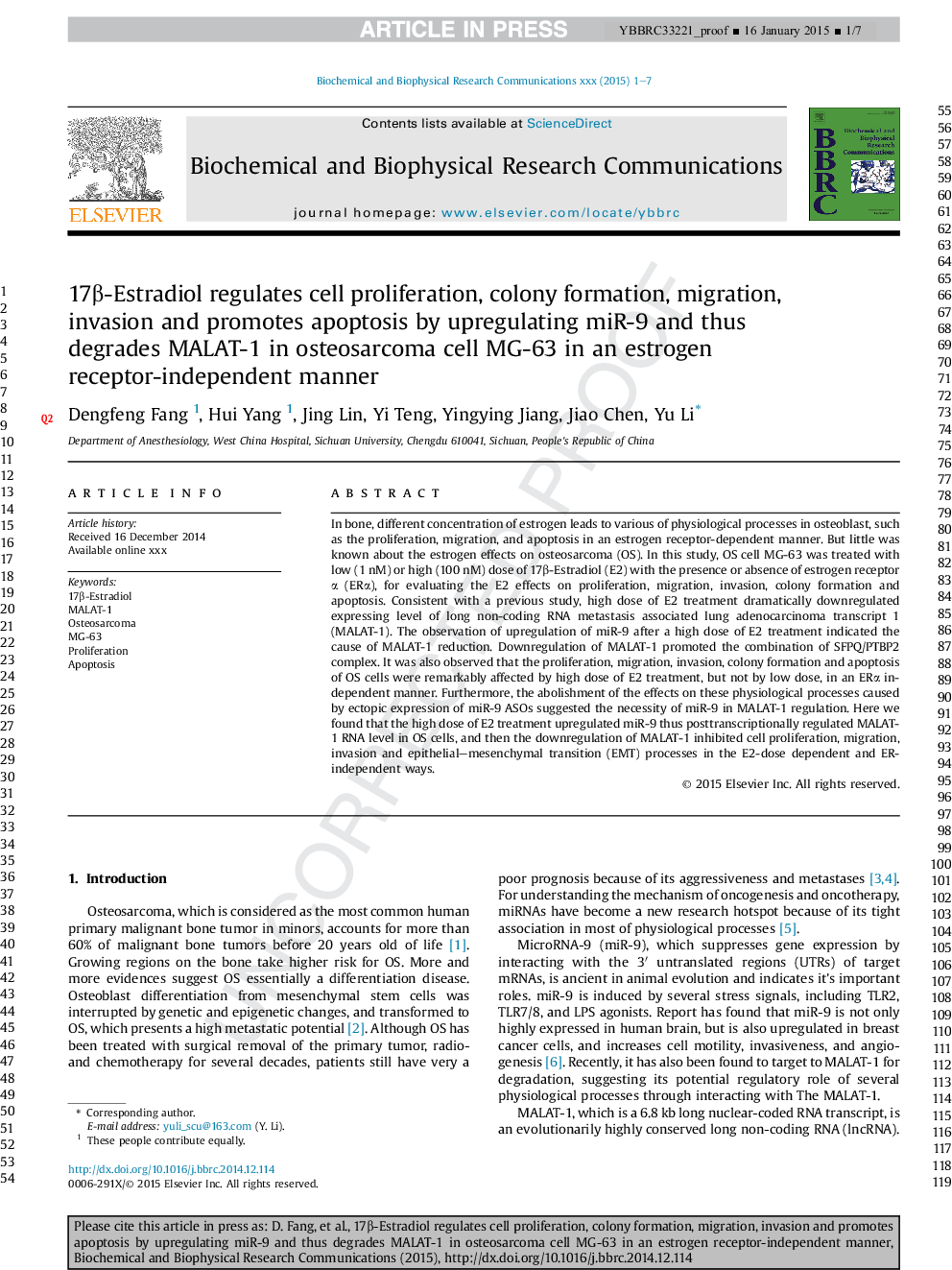| Article ID | Journal | Published Year | Pages | File Type |
|---|---|---|---|---|
| 10752513 | Biochemical and Biophysical Research Communications | 2015 | 7 Pages |
Abstract
In bone, different concentration of estrogen leads to various of physiological processes in osteoblast, such as the proliferation, migration, and apoptosis in an estrogen receptor-dependent manner. But little was known about the estrogen effects on osteosarcoma (OS). In this study, OS cell MG-63 was treated with low (1 nM) or high (100 nM) dose of 17β-Estradiol (E2) with the presence or absence of estrogen receptor α (ERα), for evaluating the E2 effects on proliferation, migration, invasion, colony formation and apoptosis. Consistent with a previous study, high dose of E2 treatment dramatically downregulated expressing level of long non-coding RNA metastasis associated lung adenocarcinoma transcript 1 (MALAT-1). The observation of upregulation of miR-9 after a high dose of E2 treatment indicated the cause of MALAT-1 reduction. Downregulation of MALAT-1 promoted the combination of SFPQ/PTBP2 complex. It was also observed that the proliferation, migration, invasion, colony formation and apoptosis of OS cells were remarkably affected by high dose of E2 treatment, but not by low dose, in an ERα independent manner. Furthermore, the abolishment of the effects on these physiological processes caused by ectopic expression of miR-9 ASOs suggested the necessity of miR-9 in MALAT-1 regulation. Here we found that the high dose of E2 treatment upregulated miR-9 thus posttranscriptionally regulated MALAT-1 RNA level in OS cells, and then the downregulation of MALAT-1 inhibited cell proliferation, migration, invasion and epithelial-mesenchymal transition (EMT) processes in the E2-dose dependent and ER-independent ways.
Related Topics
Life Sciences
Biochemistry, Genetics and Molecular Biology
Biochemistry
Authors
Dengfeng Fang, Hui Yang, Jing Lin, Yi Teng, Yingying Jiang, Jiao Chen, Yu Li,
